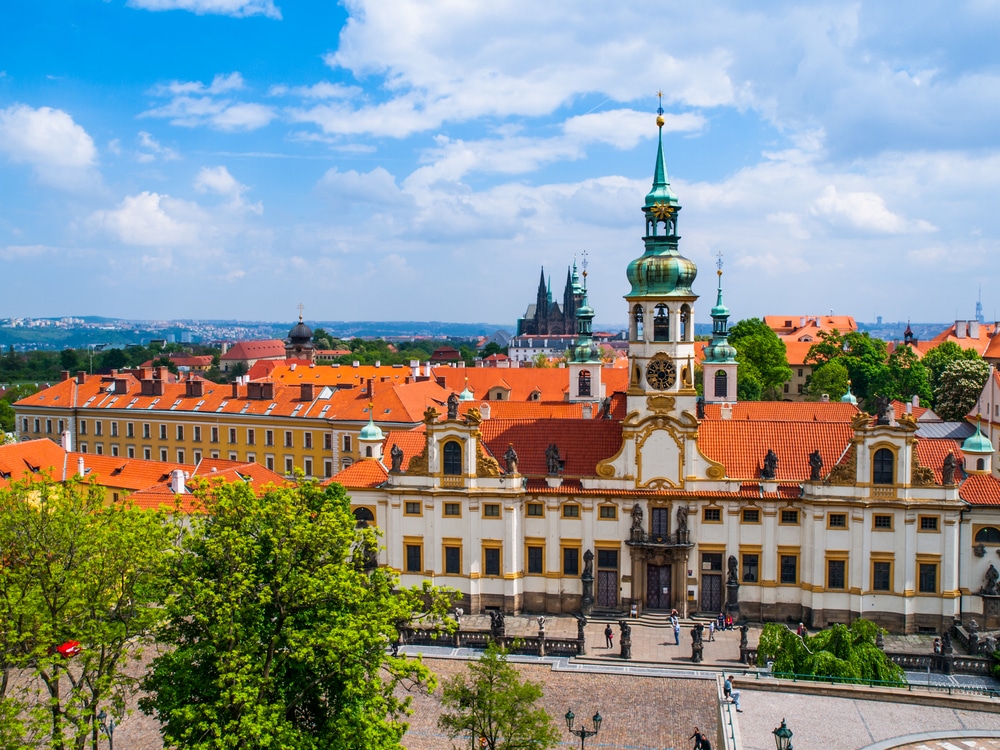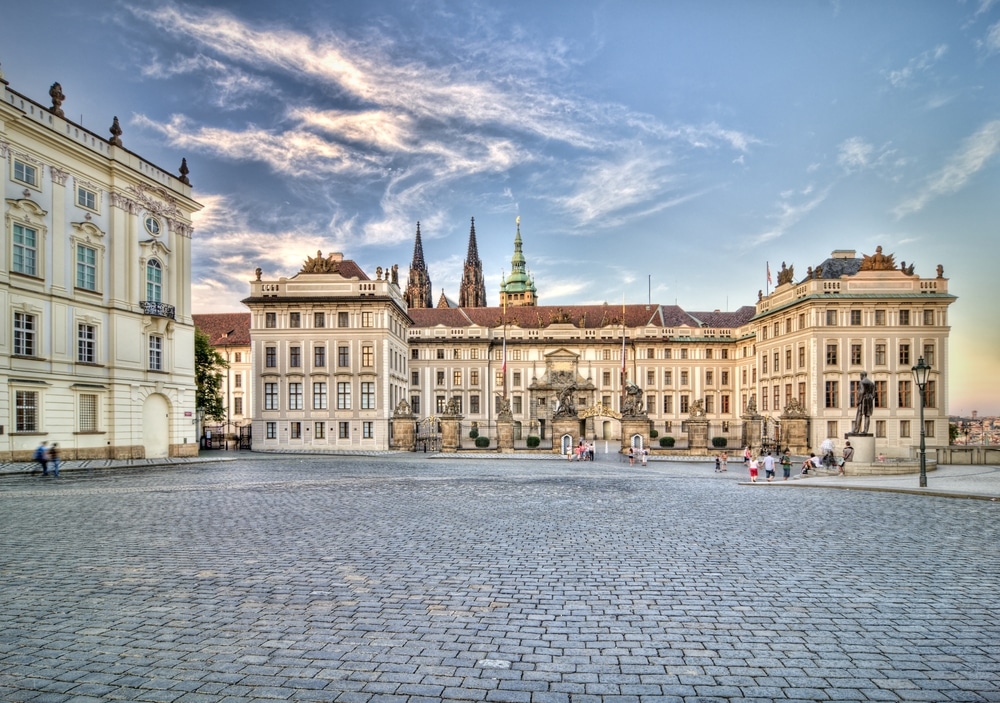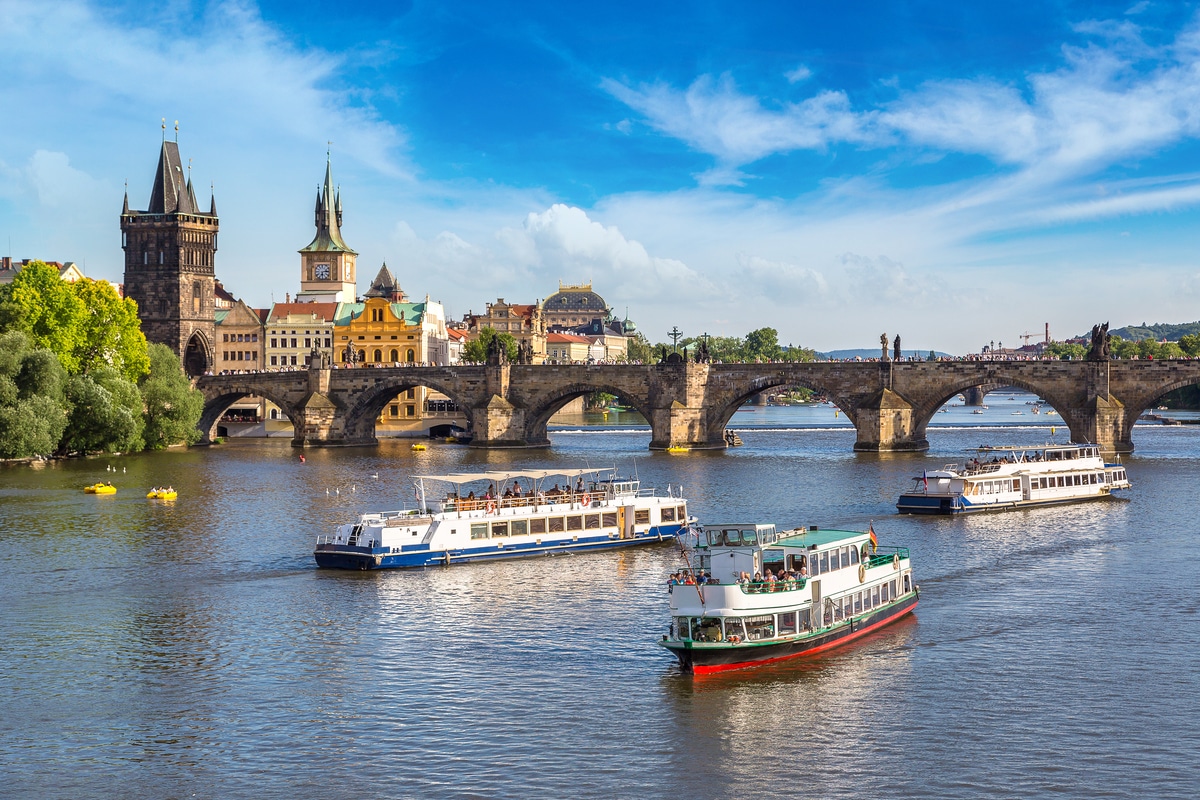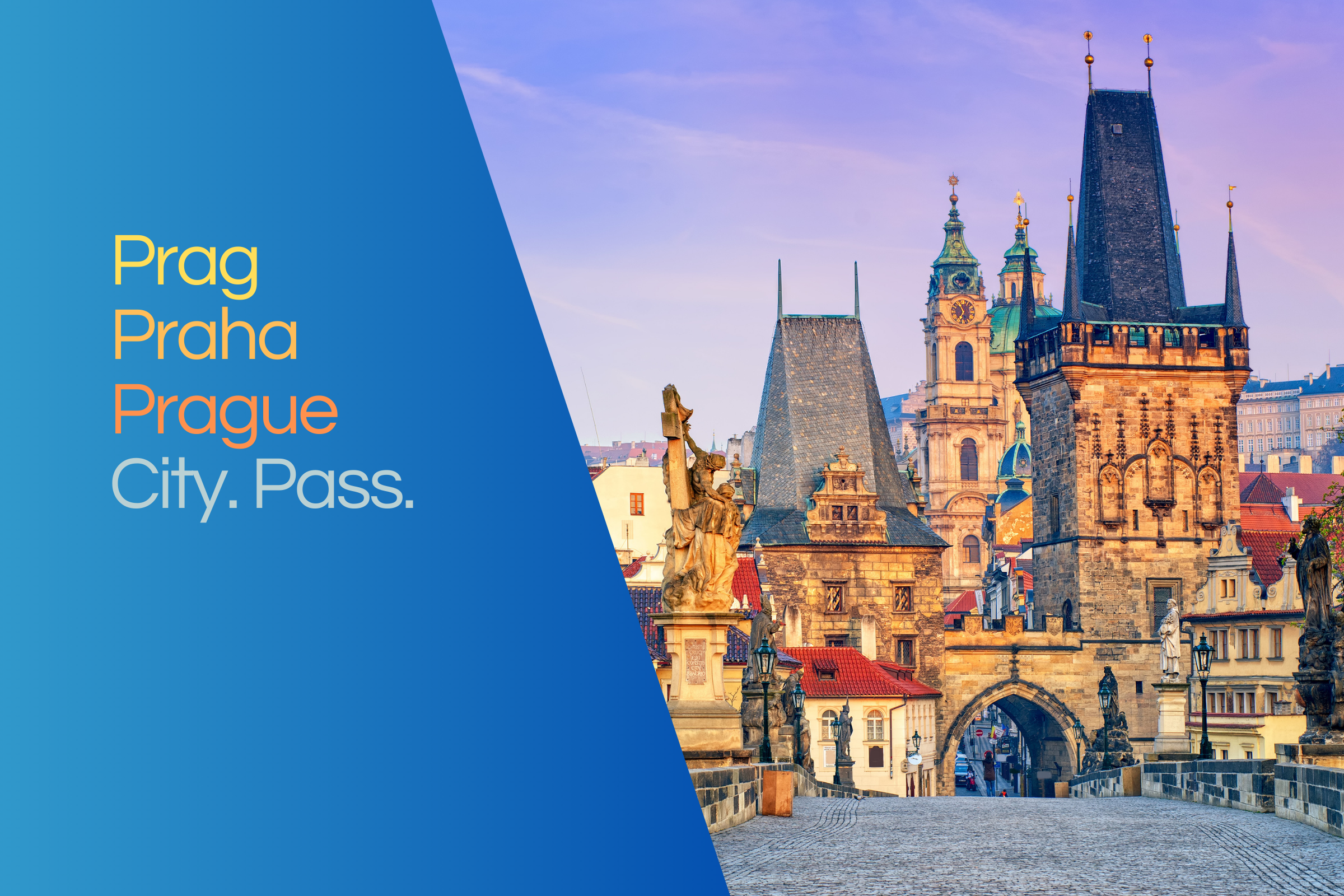- Home ›
- Czech Republic ›
- Prague
Prague Loreto
In 1626, of all times, during the Thirty Years' War, construction began on a complex of buildings that houses some of Prague's most impressive sights and bears witness to the city's chequered history. Before the Thirty Years' War, Bohemia had been mostly Protestant, but at the Battle of White Mountain the Catholics were victorious. But how were they to lead the population back to the Catholic faith?

Popular at that time was the small parish of Loreto in Italy. It housed -and still houses today- a special treasure in its basilica: Crusaders had brought the walls of the house where the angel Gabriel had appeared to Mary to Loreto. There they had been decorated with marble, among other things. In the course of the return to the Catholic faith, Marian shrines based on the Loreto model were now erected all over Bohemia, including Prague's Loreto.
The Marian shrine
The focal point of the buildings is the Santa Casa, the Holy Chaste, named after the chaste Virgin Mary and containing an early 17th-century statue of Mary. The Holy Chaste is surrounded by six chapels and a cloister.
Another significant building is the Baroque Church of the Nativity of Christ. Apart from the paintings, it is above all the impressive organ that is worth a second look. The bell tower also offers something special. The carillon of 30 bells plays the Marian song "Hail Mary a thousand times, O Mary" every hour on the hour during the day.
The monastery belonging to the pilgrimage site is the oldest Capuchin monastery in Bohemia. In keeping with the monastic hospitality, it offers cheap accommodation for pilgrims and tourists. The Loreto Treasury Museum is also housed here.
The Prague Loreto Treasury
Countess Ludmilla of Kolowrat is said to have received six and a half thousand diamonds as a wedding gift from her husband. In her will, she stipulated that the precious stones should be made into a monstrance for the Loreto Treasury. Today, this monstrance is the most important exhibit in the Treasury Museum. The twelve-kilo monstrance, also known as the "Prague Sun", was made of silver, gilded and set with 6,222 diamonds. It is considered a masterpiece of the goldsmith's art.
In addition to this showpiece, exhibits from four centuries can be seen in the Treasury Museum: Paintings, jewelry, house altars, crowns, ivory carvings and more. The collection of baroque monstrances from the 17th and 18th centuries is also unique. In addition to the aforementioned "Prague Sun", the Ring Monstrance, adorned with 500 diamonds, 200 rubies and other precious stones, and the Pearl Monstrance, which stands out with pearls and white enamel work, are also on display. And these are only the three most beautiful and famous monstrances of the extensive collection.
The oldest exhibit, however, is a simple golden cup from 1510.
With all that said, Prague's Loreto is a place where you can rest and take a breath between all the sightseeing on a city trip.



